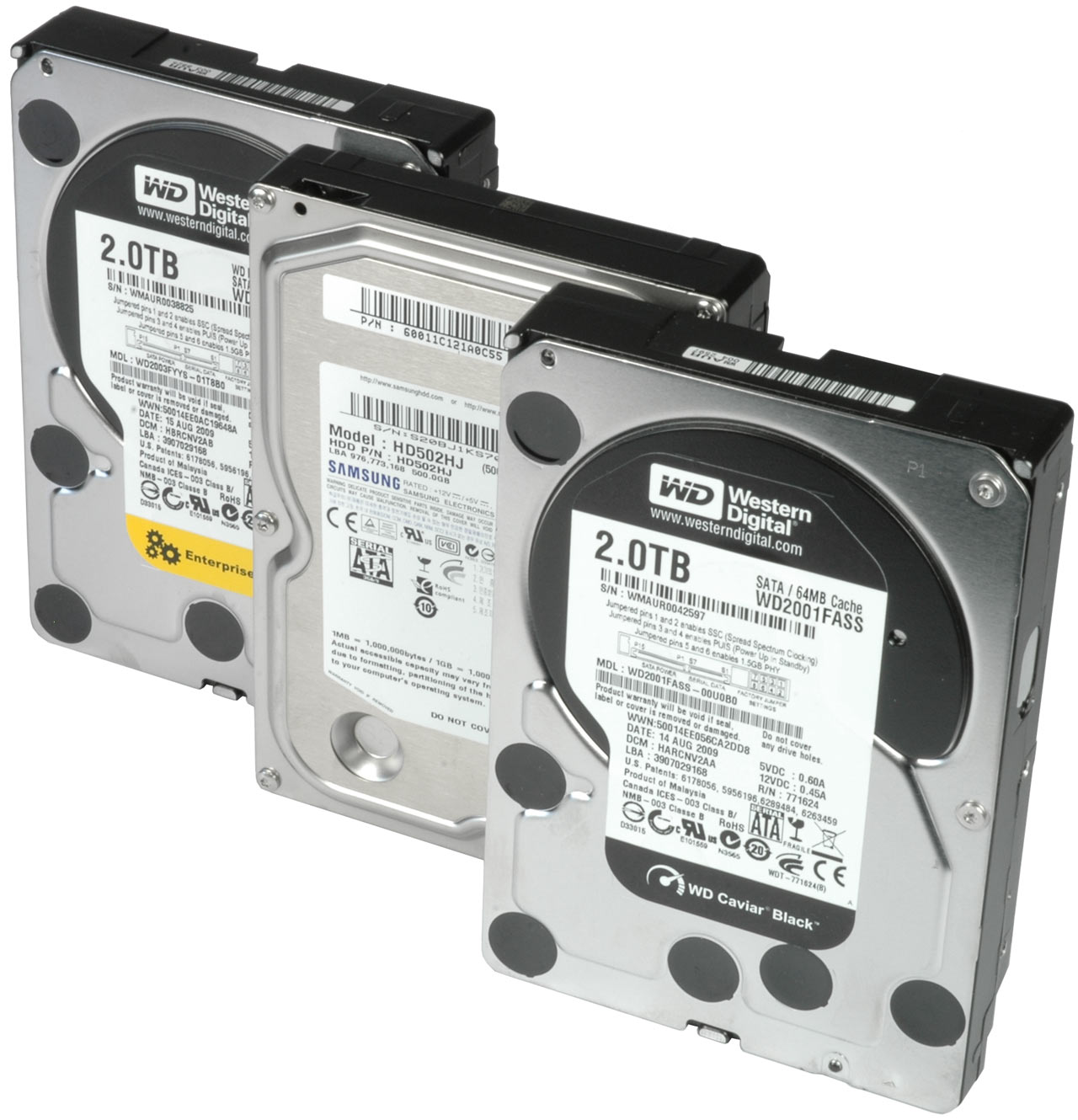500GB Per Platter: Three Next-Gen 7,200 RPM Hard Drives
500GB Per Platter Available At 7,200 RPM
The hard drive industry’s next major node is the prized 2TB capacity point for 7,200 RPM models. Samsung sent us the first ambassador of such upcoming drives, and WD is already shipping two different 2TB desktop hard drives that deliver optimal performance. We’re still waiting for the Hitachi and Seagate equivalents, but we decided to take these first drives and conduct an initial comparison.
More Speed, More Efficiency
Since most of the industry decided to approach the 2TB capacity point with low-power, high-efficiency hard drives, now is the time for vendors to jump from power savings into raw performance and enjoy minimal competition. All four key players—Hitachi, Samsung, Seagate, and Western Digital—still consider this market to be extremely important, despite increasing competition from flash SSDs.
The reason is simple: hard drive capacities will continue to grow at a significant pace. While this is also the case for flash-based SSDs, the cost for hard drives remains comparatively low. Of course, that means top-of-the-line disk products will continue to be in the $150 to $200 price range, while the latest and greatest SSDs still don’t have a chance of coming close to that.
In addition, high capacity hard drives at decent performance levels are increasingly important for servers and data centers. There’s no alternative to the good ol’ hard drive when it comes to storing huge amounts of data at fast speeds. In the end, the difference between a 110 MB/s "green" drive and a 140 MB/s performance hard drive is still significant. WD’s RE4 drive (RAID Edition), which you’ll find on the following pages, is a perfect example. Hitachi will follow with its A7K2000 and Seagate has its Constellation ES.
More Capacity?
You can expect per-platter capacities to soon leap from 500GB to 640GB or 750GB, allowing the drive makers to create 1.5TB and 2.0TB hard drives with fewer platters and higher capacity points for entry-level models. Today, though, drives larger than 2TB would only make sense in business and enterprise environments, where systems can actually handle such large volumes on bootable partitions larger than 2TB. Intel-based Apple Macs, modern RAID controllers, and fast HBAs are capable of working with GPT (GUID Partition Table) instead of the traditional Master Boot Record (MBR) to achieve this. But most PC platforms available today cannot boot from such a large partition because GPT requires EFI, rather than the conventional BIOS. Sadly enough, while most platforms are stuffed with useful and sometimes useless features, most lack the EFI and GPT support needed to take full advantage of future hard drives larger than 2TB.
Get Tom's Hardware's best news and in-depth reviews, straight to your inbox.
So the 2TB capacity barrier will remain with us for a while. We’ll now look at the two new drives by WD and Samsung’s first hard drive to utilize 500GB per platter.
Current page: 500GB Per Platter Available At 7,200 RPM
Next Page Samsung Spinpoint F3 500GB (HD502HJ)